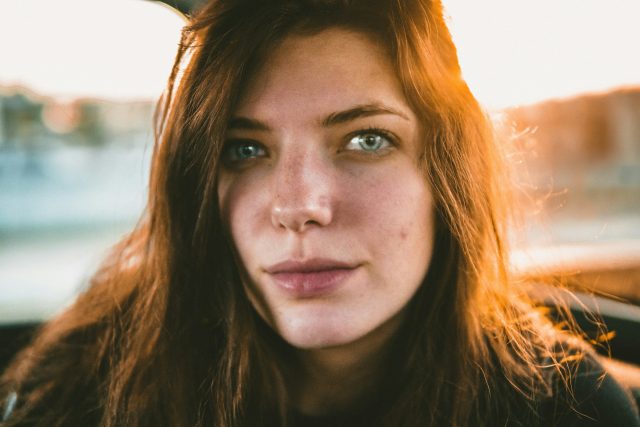Seasons Are Changing
By: Other | September 23, 2016

Written by Francine Martinez, Ph.D.
We’ve all heard of the “winter blues”, those times when we just begin to feel down for now explainable reason. Our mood shifts and we can become lethargic, more sentimental and can have this overwhelming feeling of sadness. Adding to the frustration of the mood shift is recognizing that you may not know how to remedy it because there isn’t a “point-to” cause that you can identify. So, what might this be?
What is SAD?
Seasonal Affective Disorder (SAD) is a type of depression that occurs during the same season each year. SAD begins and ends at about the same time every year. If you’re like most people with SAD, your symptoms start in the fall and continue into the winter months; sapping your energy and making you feel moody. You may have SAD if you felt depressed during the last two winters but felt much better in spring and summer. Experts aren’t sure what causes SAD, but some note that it may be caused by a lack of sunlight; this lack of sunlight may:
- Upset your “biological clock,” which controls your sleep-wake pattern and other circadian rhythms.
- Cause problems with serotonin, a brain chemical that affects mood.
Your circadian rhythm (also known as your sleep/wake cycle or body clock) is a natural, internal system that’s designed to regulate feelings of sleepiness and wakefulness over a 24-hour period. This complex timekeeper is controlled by an area of the brain that responds to light, which is why humans are most alert while the sun is shining and are ready to sleep when it’s dark outside. Your circadian rhythm causes your level of wakefulness to rise and dip throughout the day.
Serotonin is an example of a neurotransmitter, a chemical messenger that is passed between nerve cells. When a nerve impulse reaches the end of a nerve, neurotransmitters are released which cross an area called the synapse to be received by a specific receptor on the end of a target nerve. Physical locations most affected by serotonin are connected to mood and digestive processes.
So, as you can see the seasonal changes effects on people can have a range from none to significant on both our mood and energy. Often times we remain confused and isolated with our SADness, rather than seeking help to better understand what might be going on.
What are the symptoms of SAD?
- Feel sad, grumpy, moody or anxious
- Lose interest in your usual activities
- Eat more and crave carbohydrates, such as bread and pasta
- Gain weight
- Sleep more, but still feel tired
- Have trouble concentrating
Symptoms come and go at about the same time each year. Most people with SAD start to have symptoms in September or October and feel better by April or May.
How is SAD diagnosed?
It can sometimes be hard to tell the difference between SAD and other types of depression because many of the symptoms are the same. To diagnose SAD, your doctor will ask if:
- You have been depressed during the same season and have gotten better when the seasons changed for at least 2 years in a row
- You have symptoms that often occur with SAD, such as being very hungry (especially craving carbohydrates), gaining weight and sleeping more than usual
- You have a close relative who has had SAD
You may need to have blood tests to rule out other conditions that can cause similar symptoms, such as low thyroid (hypothyroidism), hypoglycemia, viral infections and chronic fatigue syndrome. Your doctor may also do a mental health assessment to get a better idea of how you feel and how well you are able to think, reason and remember.
What Are the Treatments for SAD?
The most effective treatment for SAD is light therapy, sometimes combined with antidepressants, psychotherapy (talk therapy) or both.
Light therapy, sometimes called phototherapy, can be used in different ways and may employ different types of light boxes, light visors and lamps. All are designed to bring in extra light to the eyes. In the most common form of light therapy, you sit before a light box containing a specialized fluorescent light covered with a plastic screen to block ultraviolet light for periods varying from 15 minutes to 90 minutes a day. You place the box on a table or desk where you can do paperwork, read or make phone calls. You do not need to look directly into the light.
Light therapy is safe and generally well tolerated. Minor side effects of light therapy include eye strain, headaches, irritability, fatigue and insomnia. All side effects are managed and monitored by your doctor to ensure maximum benefit with the least discomfort.
Consult with your Doctor
For any type of persistent/chronic depression, it is recommended that you always consult with your doctor. Like any mood/feeling we experience there is a range of intensity that can cause temporary and small interruptions in our life. Other moods/feelings may cause a significant interruption in our daily functions for a prolonged period of time. SAD is a form of depression that doctors and mental health providers have been successful in helping patients manage, you just need to ask.
Image: Isabelle Gallino on flickr and reproduced under Creative Commons 2.0



